The coronavirus pandemic has forced countries to impose stern lockdowns to contain the spread of the disease, bringing economic activities worldwide to an abrupt halt.
While industrial lockdown has brought hardship to all those associated with it, it has also bought the environment enough time to recover to some extent from all the toxicity of the past decades.
Air quality levels across South Asia are the worst in the world, resulting in thousands of premature deaths each year. Last year, Pakistan was ranked the second most polluted country in the world according to World Air Quality Report 2019. While India was ranked fifth, Bangladesh topped the charts for the most polluted country.
In Pakistan, the federal government, after deliberating with provincial governments, enforced a nationwide lockdown after the coronavirus cases started to surge rapidly last month.
Data released by the Center for Centre for Research on Energy and Clean Air (CREA) recently shows that air pollution in major cities of Pakistan has reduced considerably after the lockdown due to a decrease in the consumption of fossil fuels.
The graph below shows NO2 levels in Karachi, Islamabad, Rawalpindi, Lahore, Multan, and Peshawar before and after the lockdown started on March 24th.
The following maps, plotted using the TROPOMI- Sentinel-5P satellite data, reveal the drop in NO2 levels in major cities in Pakistan for 23 days before and after the lockdown was announced.
Karachi
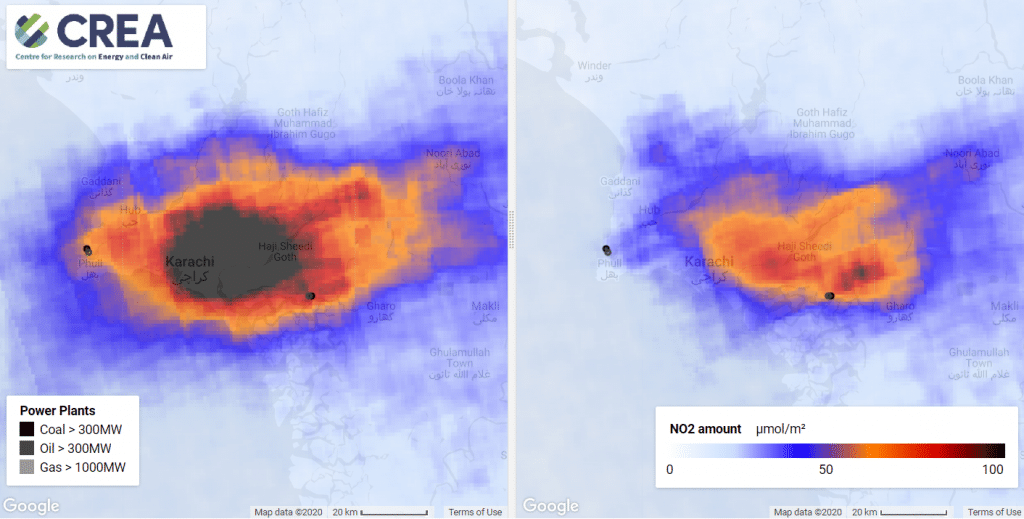
Islamabad & Rawalpindi
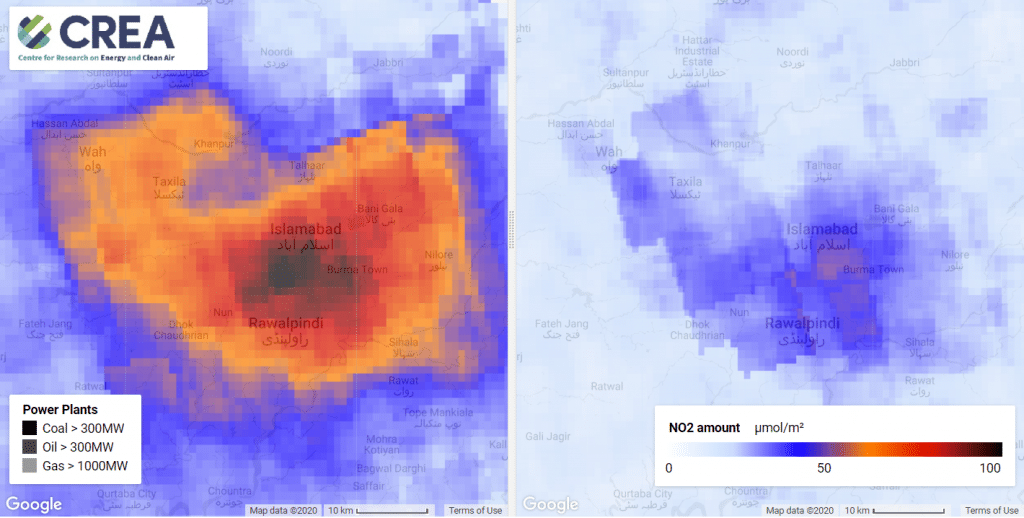
Lahore
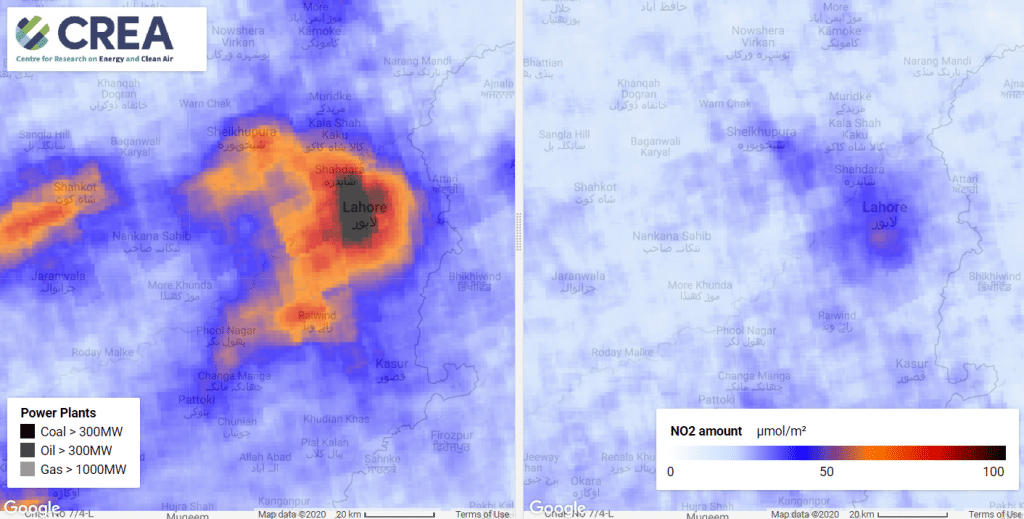
Multan
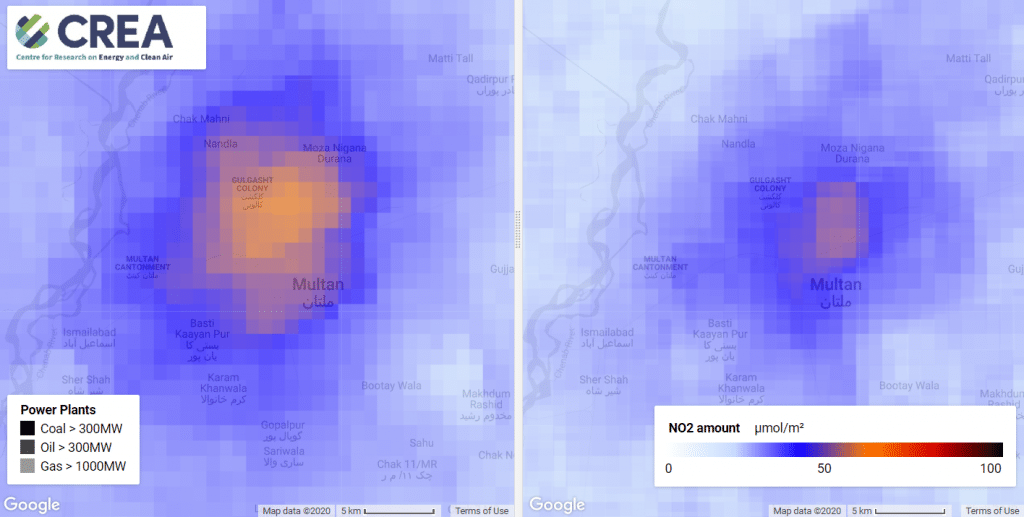
Peshawar
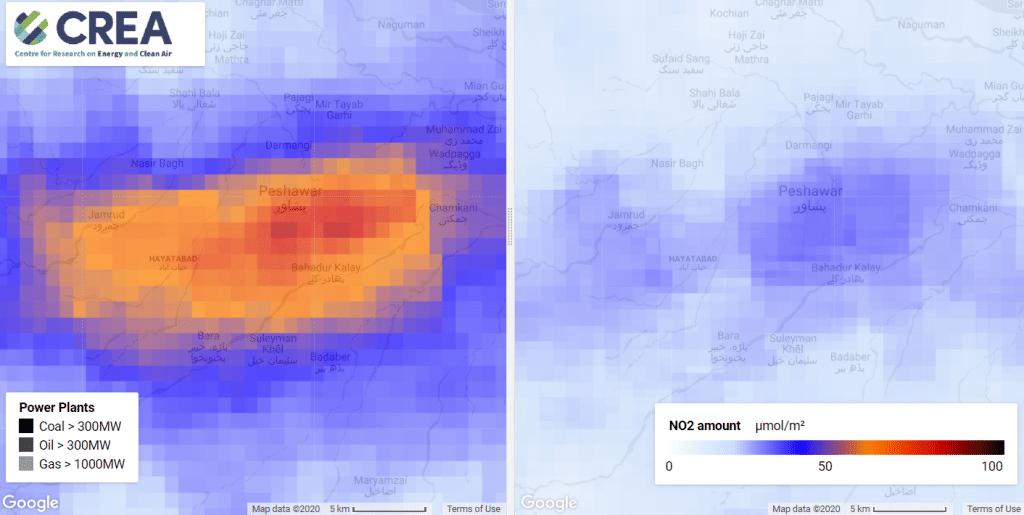
The graph and maps above show that the problem of air pollution in Pakistan can be tackled by switching from fossil fuels to clean energy-based systems going forward. For now, the ameliorated air quality levels have given us an idea of how clear skies would look like, and breathing in a pollution-free environment would feel like if pollution is reduced in years to come.
Via: CREA
